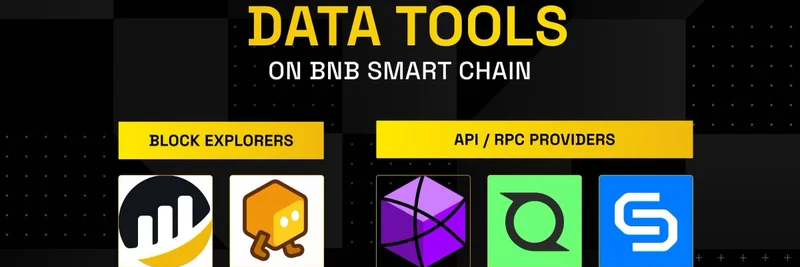Hey there, crypto enthusiasts! If you've been scrolling through X lately, you might have caught this intriguing post from BSCN teasing an ultimate analysis of $KAS. They're asking the big question: Could Kaspa, spearheaded by @kaspaunchained, one day eclipse heavyweights like Solana and Ethereum? Well, let's dive into the details from their linked guide on bsc.news and unpack what makes Kaspa tick – and whether it has the chops to go big.
What Exactly is Kaspa?
Kaspa isn't your run-of-the-mill blockchain. Launched back on November 7, 2021, it's a Layer-1 protocol that's all about speed and scalability without sacrificing decentralization or security. Unlike traditional blockchains that chug along in a straight line, Kaspa uses something called blockDAG – that's Directed Acyclic Graph for blocks, folks. This tech lets multiple blocks be created and added simultaneously, cranking up efficiency to levels that make older networks look sluggish.
The name "Kaspa" draws from Aramaic words meaning "silver" and "money," positioning it as a speedy complement to Bitcoin's "digital gold." It had a fair launch with no premine, pre-sales, or insider allocations, which has built a strong, community-driven vibe. Developers from over 16 countries contribute to its open-source code on GitHub, making it a global effort that's as transparent as it gets.
The Tech Behind the Hype: BlockDAG and GHOSTDAG
At the heart of Kaspa is its blockDAG structure, which solves the "orphan block" problem plaguing chains like Bitcoin. Instead of discarding competing blocks, Kaspa weaves them into the ledger, allowing for parallel processing. This is powered by GHOSTDAG, an evolution of the Nakamoto Consensus. It sorts blocks into "Blue" (honest and well-connected) and "Red" (potentially malicious), ensuring the network stays secure even at high speeds.
Fast forward to May 2025, and the Crescendo Hardfork brought a game-changing Rust rewrite called Rusty-Kaspa. This upgrade bumped throughput to 10 blocks per second, slashing confirmation times to just 10 seconds. We're talking 3,000 to 4,000 transactions per second (TPS) – that's way ahead of Bitcoin's 7 TPS and even gives Ethereum a run for its money post its upgrades.
Other cool features include:
- Reachability and Pruning: Keeps the network lean by querying block relations and trimming old data.
- SPV Proofs: Enables light clients to verify transactions without downloading the whole chain.
- Subnetwork Support: Paves the way for Layer-2 solutions like ZK-rollups.
- Harmonic Mass Formula: A clever defense against spam attacks.
With plans to hit 32 blocks per second soon and 100 in the future, Kaspa is gearing up for smart contracts via payloads and additive addresses (check out KIP-10 for the deets). This could open doors to DeFi, DAOs, games, and more, all while running efficiently on everyday hardware like Raspberry Pis.
$KAS Tokenomics: Fair and Finite
Kaspa's native token, $KAS, follows a straightforward tokenomics model. Max supply caps at about 28.7 billion, with around 26.51 billion in circulation as of late July 2025. Emissions halve annually but smoothly, dropping monthly by a factor of (1/2)^(1/12). Current block rewards sit at roughly 4.9 KAS.
Distribution looks decentralized: Over 70% of addresses hold small amounts (0.01-10K KAS), mid-tier wallets control 30%, and whales (10M+ KAS) hold 43% – though many of these are likely exchanges. No insider dumps here, which is a breath of fresh air in the crypto world.
Can Kaspa Really Outgrow Solana and Ethereum?
Now, the million-dollar question from that BSCN tweet. Kaspa's TPS crushes Ethereum's current ~30 TPS (even with Layer-2s) and rivals Solana's boasted 65,000 TPS in theory – though Solana has faced outages and centralization gripes. Kaspa's PoW roots offer battle-tested security, unlike Solana's Proof-of-History which some call less decentralized.
Ethereum, the granddaddy of smart contracts, has a massive ecosystem with trillions in TVL, but it's bogged down by high fees and slower speeds. Kaspa's upcoming smart contract support could steal some thunder, especially if it maintains low costs and high throughput.
Pros for Kaspa:
- Ultra-fast confirmations make it ideal for real-world payments.
- Fair launch builds trust and community loyalty.
- Rust rewrite ensures scalability without the bloat.
Potential hurdles:
- Still building its dev ecosystem – Ethereum and Solana have years of head start.
- PoW energy use might turn off eco-conscious investors, though it's more efficient than Bitcoin.
- Adoption is key; without killer apps, speed alone won't cut it.
In the meme token space we're all about at Meme Insider, Kaspa's hype has a viral edge – think community-driven pumps and memes around its "silver to Bitcoin's gold." If it integrates meme-friendly features on Layer-2, it could become a hotspot for the next wave of fun, speculative tokens.
Ultimately, whether $KAS flips Solana or Ethereum depends on execution. With its tech edge and growing buzz, it's got potential to carve out a huge niche. Head over to Kaspa's official site or dive deeper into the BSCN guide to form your own opinion. What do you think – is Kaspa the next big L1? Drop your thoughts in the comments! 🚀


